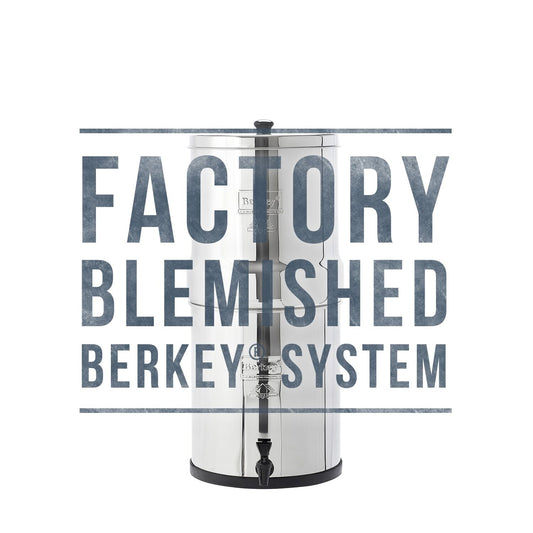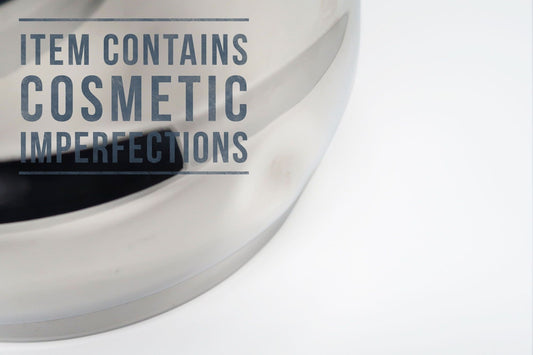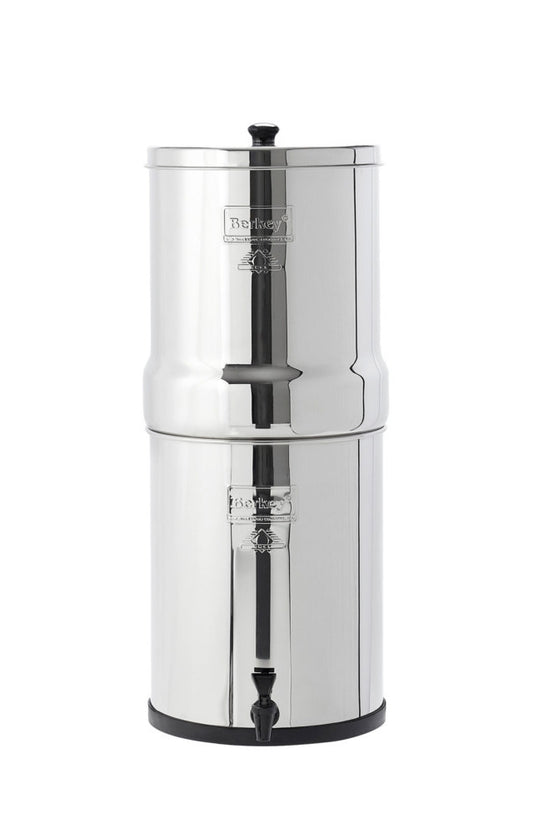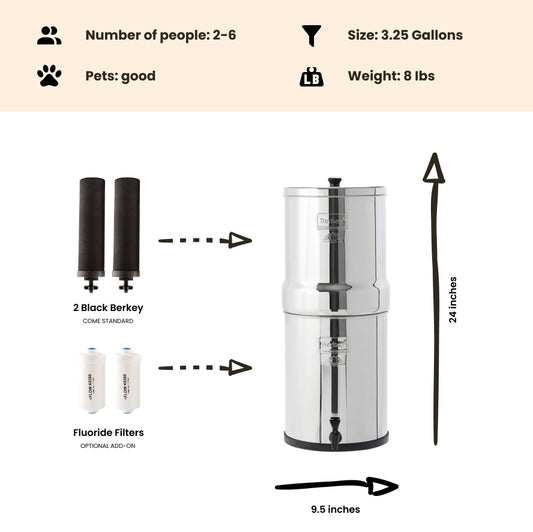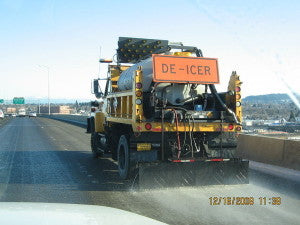
Road Salt a Major Contributor to Urban Stream Pollution
By Dan DeBaunShare
Average concentrations of chloride levels measured in many northern American streams are very often much higher than toxic levels, and over the last twenty years these incidents have been occurring twice as frequently, largely as a result of widespread use of road salt to remove ice from urban roads and pavements during winter.
According to a study conducted by the US Geological Survey (USGS) between 1960 - 2011, which was recently published in Science of the Total Environment, chloride levels have dramatically increased in 84% of the urban streams assessed. At sites in the north, including sites near Denver, Colorado; Chicago, Illinois; Milwaukee, Wisconsin; and steams near other urban areas, chloride levels rose year-round over time, peaking over winter.
"Some freshwater organisms are sensitive to chloride, and the high concentrations that we found could negatively affect a significant number of species," said Steve Corsi, USGS scientist and lead author of the study. "If urban development and road salt use continue to increase, chloride concentrations and associated toxicity are also likely to increase."
For the study, the researchers analyzed water-quality records recorded at thirty water-quality monitoring sites along 19 urban streams situated near metropolitan areas in Colorado, Illinois, Maryland, Michigan, Ohio, Pennsylvania, Texas, Wisconsin, and the District of Columbia.
The study reports a number of key findings, including:
- Between 2006 and 2011, levels of chloride at 29% of the sites exceeded water quality safety standards of 230 mg/L set by the EPA by more than 100 days a year (on average), nearly twice the number of days as recorded between 1990 and 1994. This increase was observed at sites along the Kinnickinnic and Menomonee Rivers situated near Milwaukee, and Poplar Creek, situated in close proximity to Chicago.
- Chloride levels were lowest in streams whose watersheds were not impacted by urban areas or where nearby cities received very little snowfall during winter (i.e Dallas, Texas).
- Winter chloride levels rose over the course of the study period in 16 of the urban streams monitored.
- Chloride levels rose over the course of the study period in non-winter months when no de-icing was taking place in 13 of the urban streams monitored, suggesting that chloride permeates through the soil to contaminate groundwater sources during winter, from where it is then fed to surface water systems year round, including during the summer months.
- Chloride concentrations in water rose more rapidly than urban development was taking place in cities situated near the monitoring sites.
- The rapid rise in chloride concentrations were most likely due to an increase in the rate of salt application, combined with an increase in baseline conditions experienced over the summer months when runoff was low, and higher snowfalls recorded in the Midwest throughout the latter years of the study.
"De-icing operations help to provide safe winter transportation conditions, which is very important," said Corsi. "Findings from this study emphasize the need to consider de-icer management options that minimize the use of road salt while still maintaining safe conditions."
The rising chloride levels in urban streams can be attributed to the use of road salt by municipalities, counties and state agencies across the nation to keep roads ice-free and safe to drive on in winter. and also by organizations (public and private) and individuals to remove ice from parking lots, driveways and walkways.
However, these are not the only sources of chloride; other contributing sources include contaminated water from farming operations, wastewater treatment facilities and septic systems, as well as salt that occurs naturally in rocks. However, according to this study, road salt is the major contributor of chloride to urban streams situated near northern US cities.
Journal Reference:
Steven R Corsi, Laura A De Cicco, Michelle A Lutz, Robert M Hirsch. River chloride trends in snow-affected urban watersheds: increasing concentrations outpace urban growth rate and are common among all seasons. Science of the Total Environment. (2015) Vol.508, 488-497. doi:10.1016/j.scitotenv.2014.12.012
-
Regular price From $302.00 USDRegular priceUnit price / per
-
Regular price $234.00 USDRegular priceUnit price / per
-
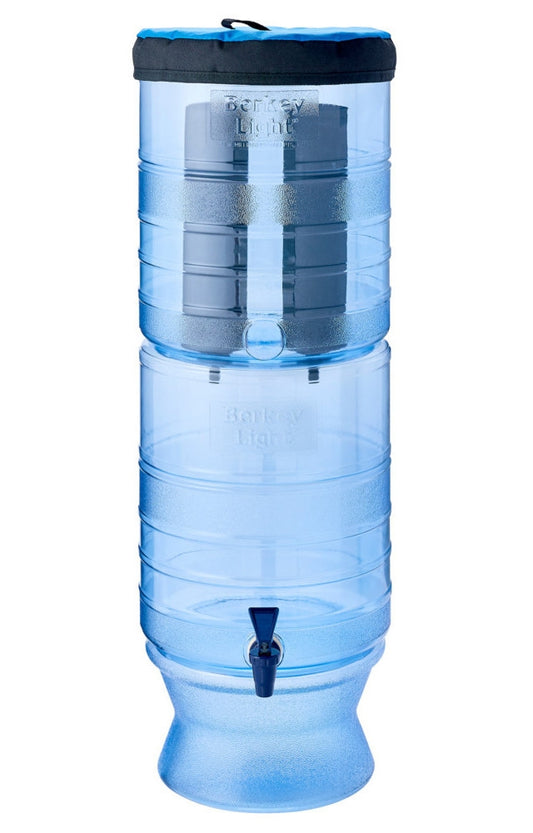
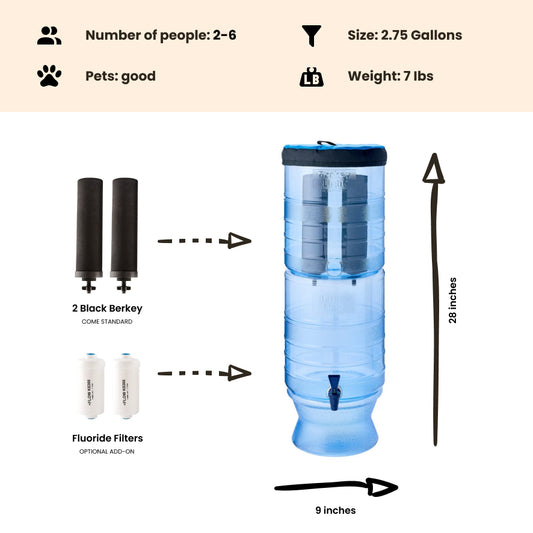 Sold outRegular price From $305.00 USDRegular priceUnit price / per
Sold outRegular price From $305.00 USDRegular priceUnit price / per -
Regular price $327.00 USDRegular priceUnit price / per
-
Regular price From $367.00 USDRegular priceUnit price / per
-
Regular price From $408.00 USDRegular priceUnit price / per
-
Regular price From $451.00 USDRegular priceUnit price / per

Dan DeBaun
Dan DeBaun is the owner and operator of Big Berkey Water Filters. Prior to Berkey, Dan was an asset manager for a major telecommunications company. He graduated from Rutgers with an undergraduate degree in industrial engineering, followed by an MBA in finance from Rutgers as well. Dan enjoys biohacking, exercising, meditation, beach life, and spending time with family and friends.
~ The Owner of Big Berkey Water Filters


